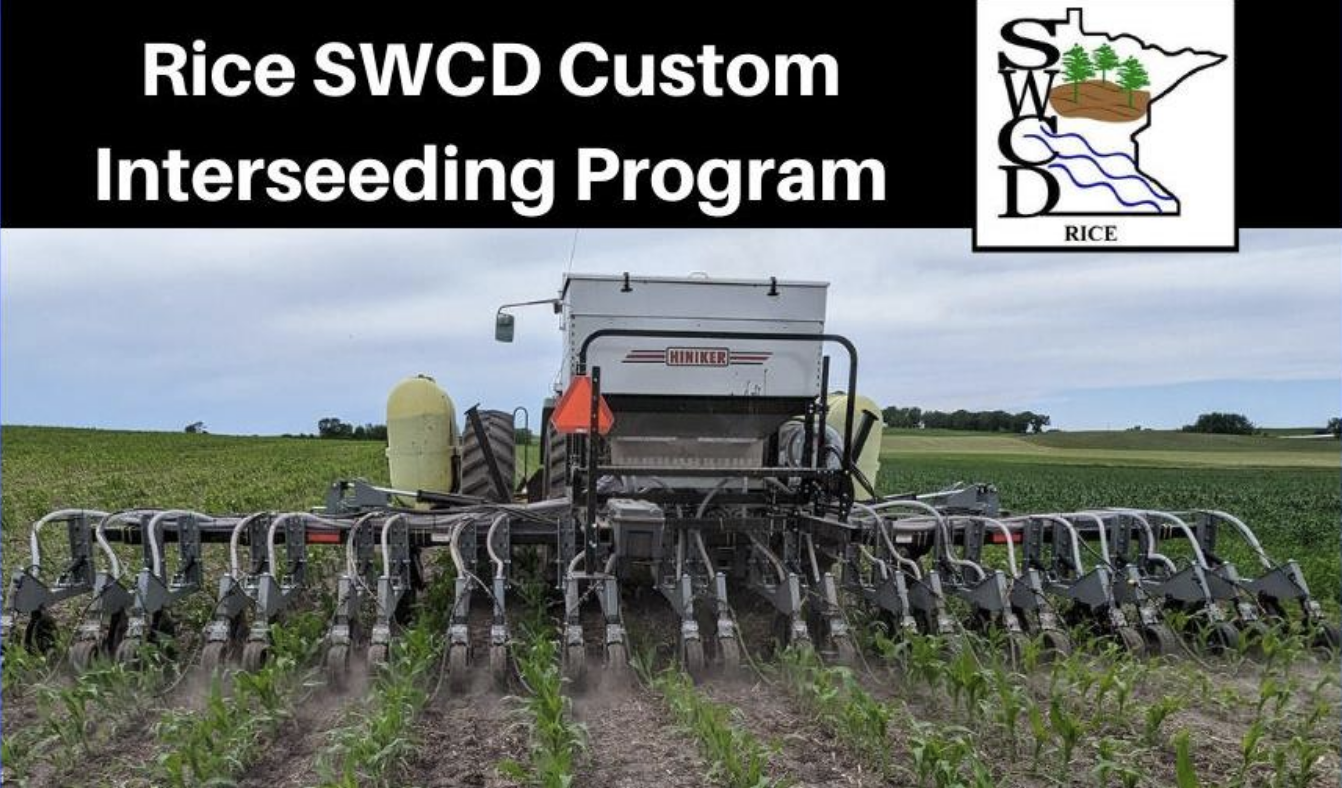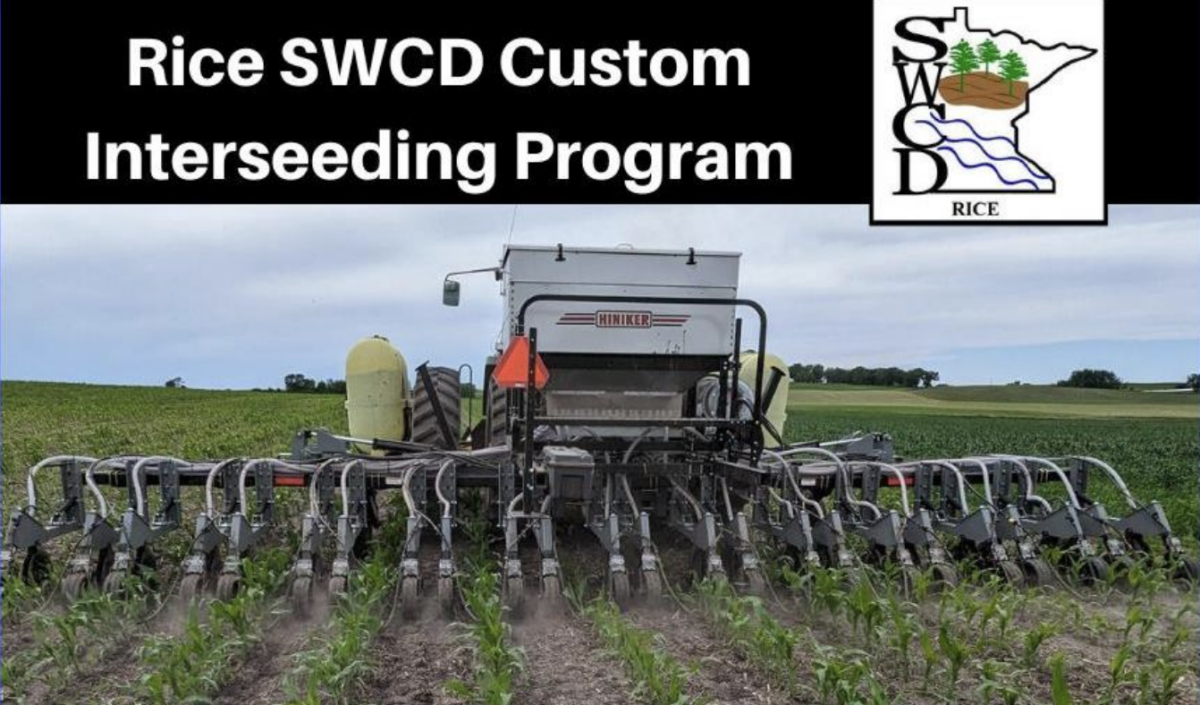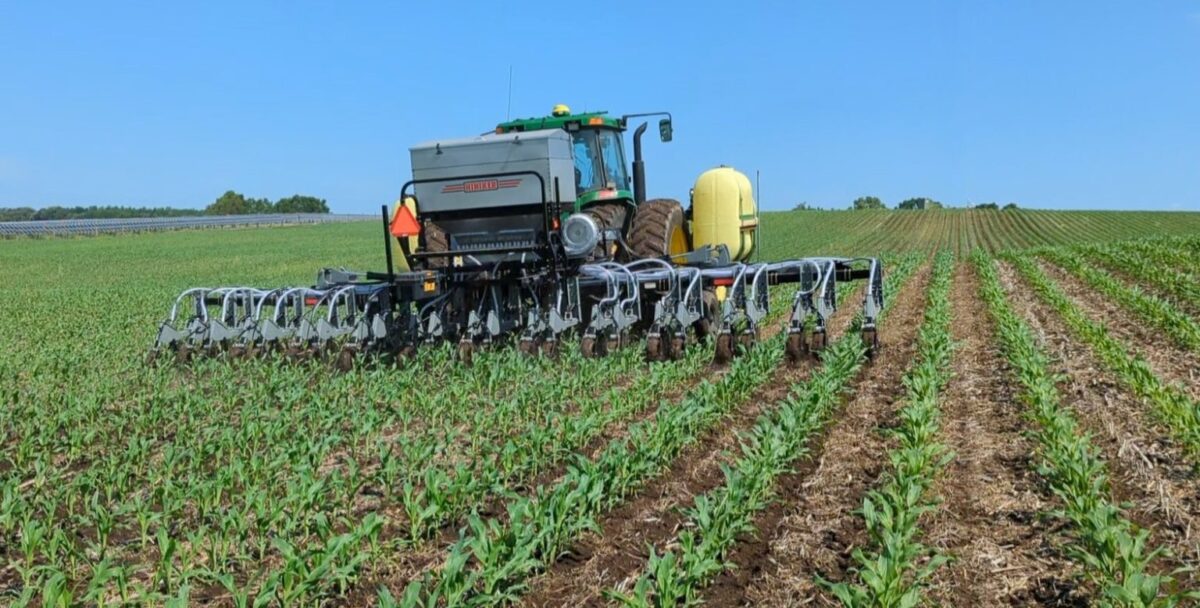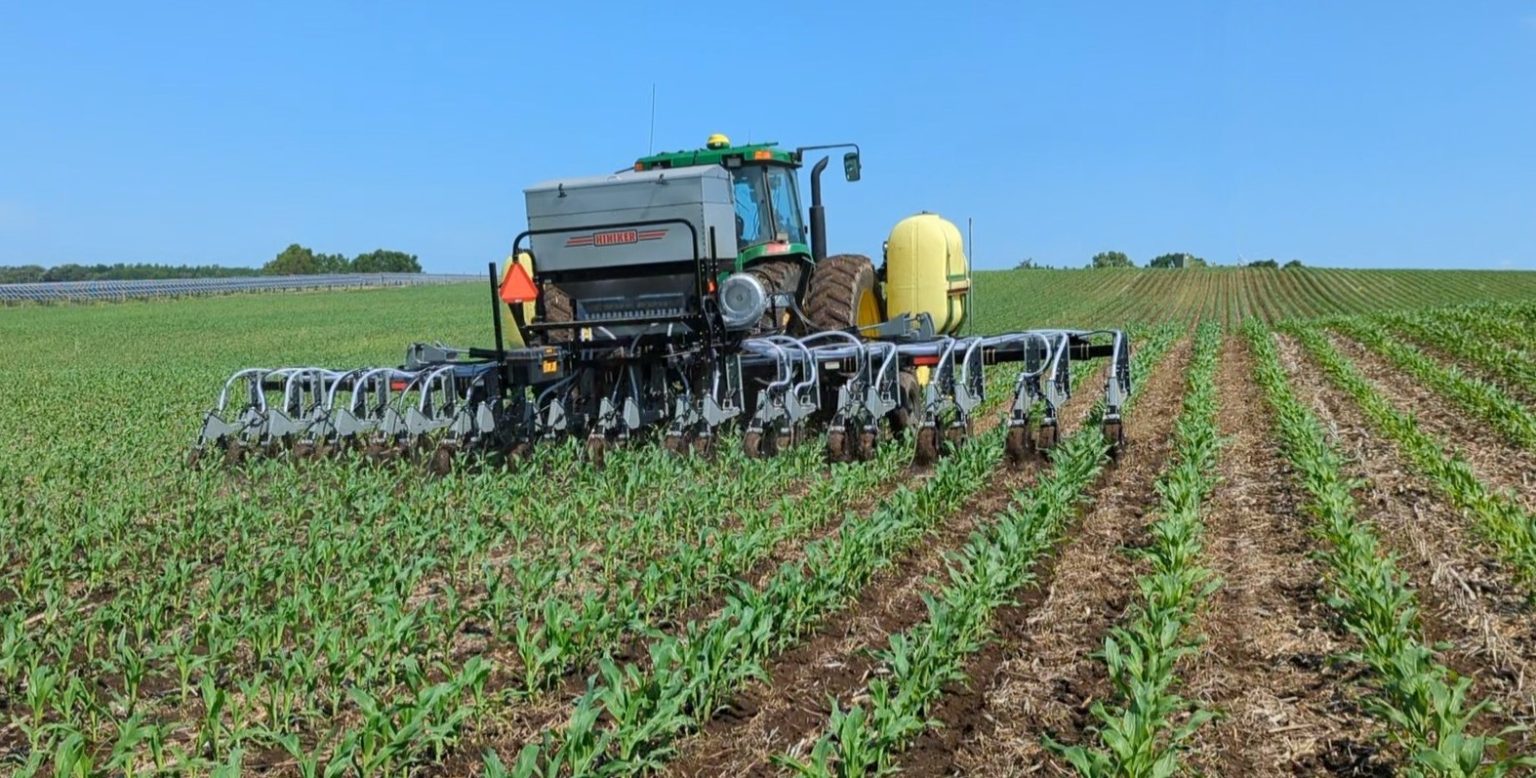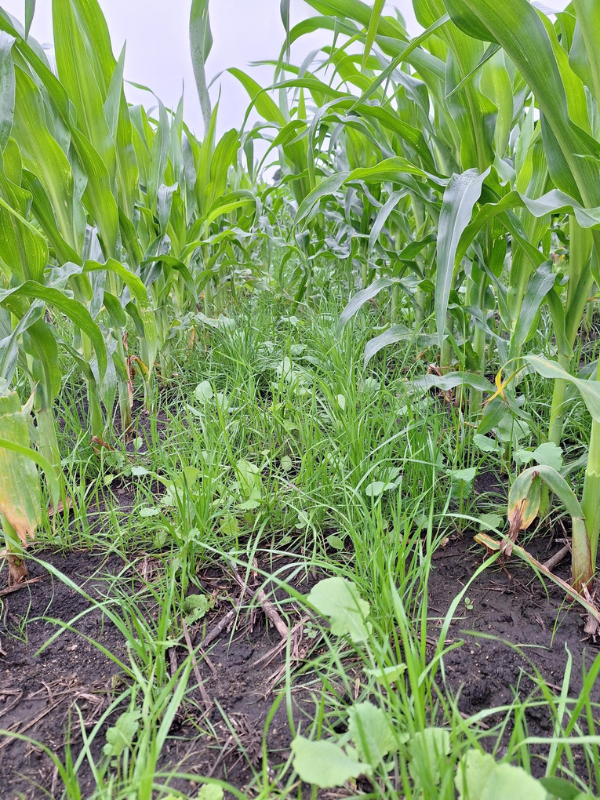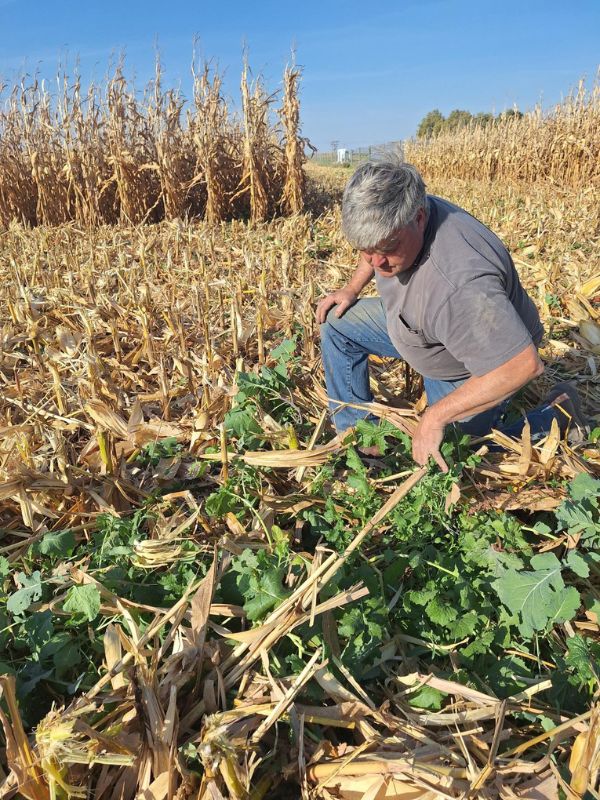Interseeding cover crops can be an effective and timely way to establish cover crops in cornfields here in Minnesota. Planting cover crops after the corn harvest in the fall may run the risk of limited time for the cover crop to emerge and develop. However, planting cover crops directly into the corn in early June provides nearly the entire growing season for the cover crop to establish itself, allowing it to develop a much greater biomass.
Cover crops provide many benefits: they increase plant diversity which improves soil biology and enhances nutrient cycling. Cover crops help prevent erosion, suppress weeds, and increase water infiltration, ultimately reducing flooding and ponding risks.
Mike and Shane Peterson of Northfield, MN, have been interseeding cover crops into corn for several years. In 2019, they collaborated with the Rice Soil and Water Conservation District (SWCD) to retrofit a salvaged toolbar with a new Gandy air seed box to broadcast cover crop seed between the corn rows. In 2024, they became local dealers for the Hiniker interseeder purchased by Rice SWCD, which drills cover crop seed into two furrows set between corn rows. Mike and Shane have been contracting with Rice SWCD to offer custom cover crop interseeding services to local farmers.
Mike and Shane Peterson’s 2024 Experience with Cover Crop Interseeding
We caught up with Mike and Shane to hear about their experiences with cover crop interseeding in 2024:
Mike:
“In 2024, we interseeded 136 acres of corn with cover crops. It was a very challenging spring with all the rain, but we were able to interseed on June 5th & 6th into corn fields that had been planted on April 24th and 25th. The Hiniker Model 7055 interseeder was set up so that we could side-dress 32% nitrogen at the same time as planting the cover crop. This setup was incredibly efficient. Given the heavy rains and early-season nitrogen losses, we felt the side-dressed nitrogen really helped the corn, and the cover crop was in a good position to establish itself.”
“Before corn planting in spring, we strip-tilled and applied a nutrient mix of 40N-65P-75K-15S-1ZN. Five days before interseeding the cover crop, we applied glyphosate and Status herbicide to control weeds. For the cover crops, we seeded 14.5 pounds per acre of a mix of annual ryegrass, red clover, kale, turnip, and cabbage. A diverse mix of cover crops promotes soil biology, and that improves nutrient cycling, and by drilling the seed, we were able to plant less of the seed mix per acre and achieve better germination compared to broadcast seeding.
“With the side-dressed nitrogen, the total nitrogen applied was 152 pounds per acre. That worked out to 0.77 pounds of nitrogen per bushel of corn harvested. On the net return per acre, our interseeded fields were right on par with the non-interseeded fields.”
“What we observed in 2024 warrants our continued attention. We feel the interseeded fields are set up really well for next season’s soybeans We absolutely will continue interseeding cover crops into corn and look to add more acres in 2025.”
“The way I see it, we do not get to pick and choose our soil, we have what we have, and that means we have to enhance our soil, not degrade it.”
Key Benefits of Interseeding Cover Crops
The biggest advantage of interseeding is that the cover crops have more time to build both above-ground and below-ground biomass. The cover crop is in place to protect the soil throughout the growing season and immediately after harvest. For farmers with cattle, interseeded cover crops provide high-quality forage for grazing cattle. Interseeding cover crops early into corn also provides a firm soil surface to carry equipment loads, reducing ruts and soil compaction.
On the science side, according to the scientific journal Agriculture, Ecosystems & Environment, interseeding cover crops into corn increases organic carbon and total available nitrogen. Locally, an on-going study with more than a dozen Rice County farmers is finding that fields planted with cover crops use less nitrogen fertilizer per bushel of corn produced.
Cover Crop Interseeder and Nitrogen Side-dress Service Ready for 2025
Rice SWCD has been providing custom interseeding service since 2019, averaging 10-12 farms each year. With the new Hiniker interseeder, because the seed is drilled, seeding rates are lower compared to broadcast seeding, reducing seed cost. The ability to side-dress nitrogen saves the farmer one pass across the field, providing another direct savings of $12-$15 per acre.
With the Rice SWCD Hiniker interseeder set up to side-dress nitrogen while planting cover crops, it’s a perfect win-win situation for both the crops and the soil. Contact our office to schedule cover crop planting for the 2025 growing season at 507-334-5408.
Source: https://www.riceswcd.org/interseeding-cover-crops-a-win-win-for-corn-production-in-minnesota/
